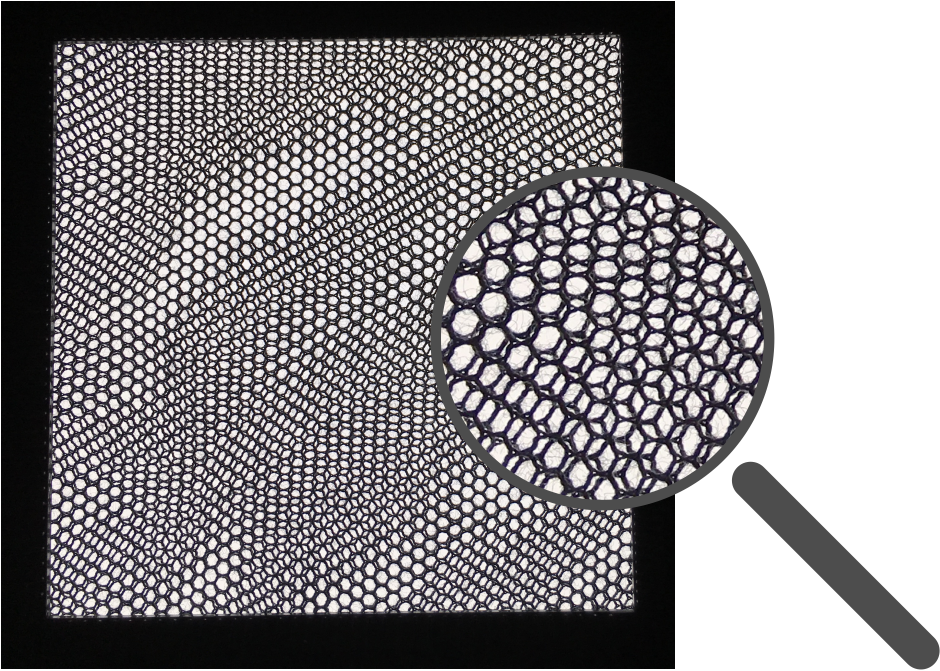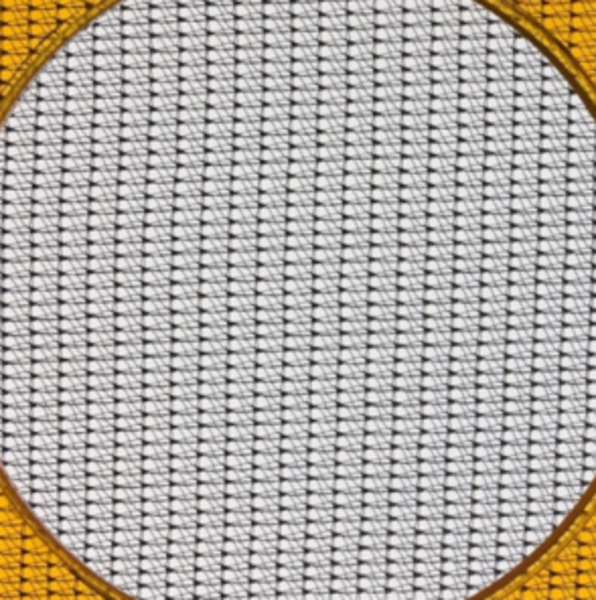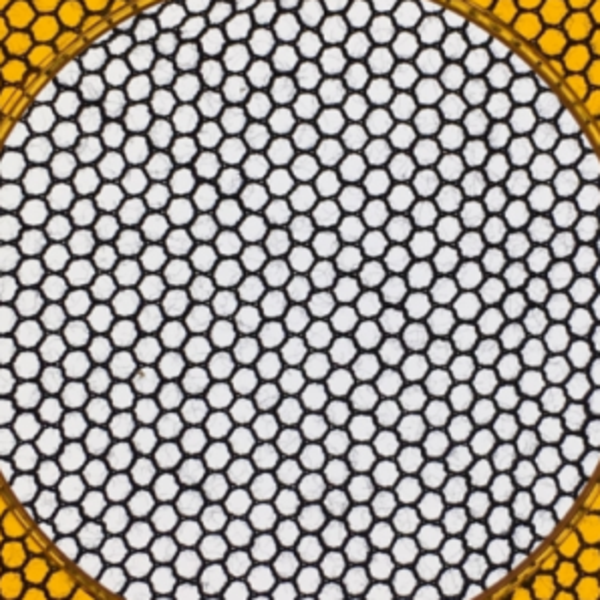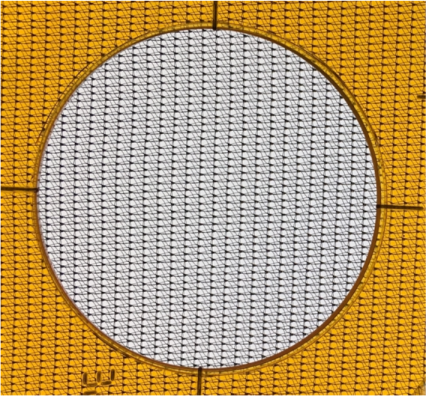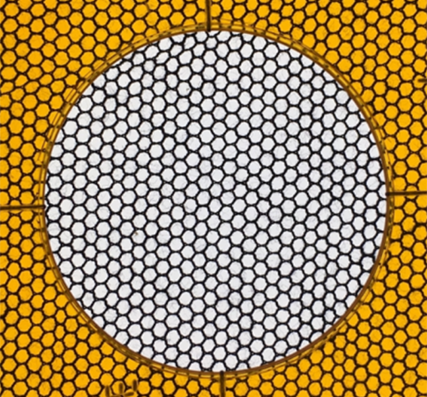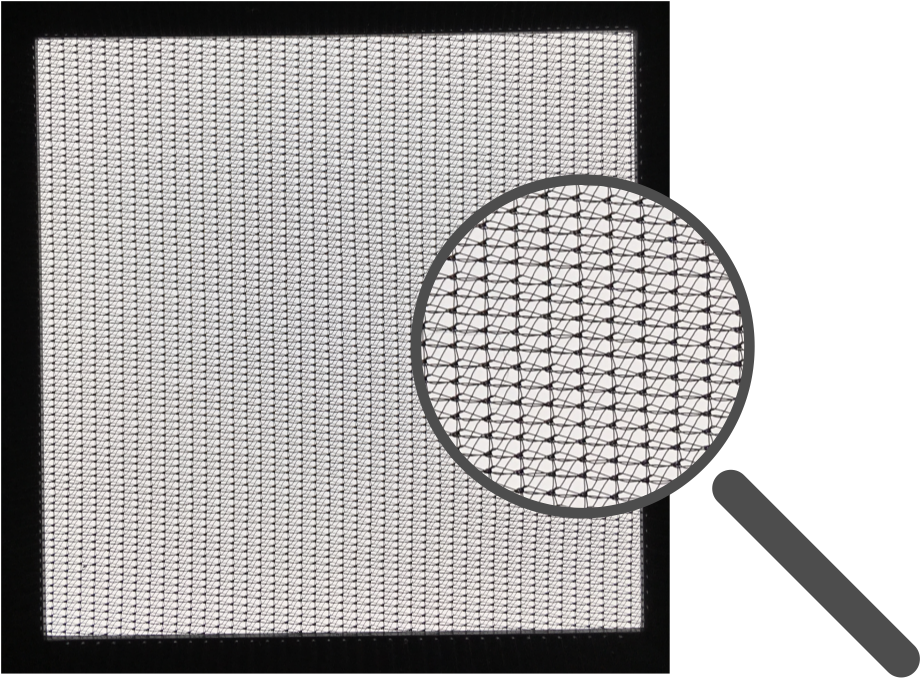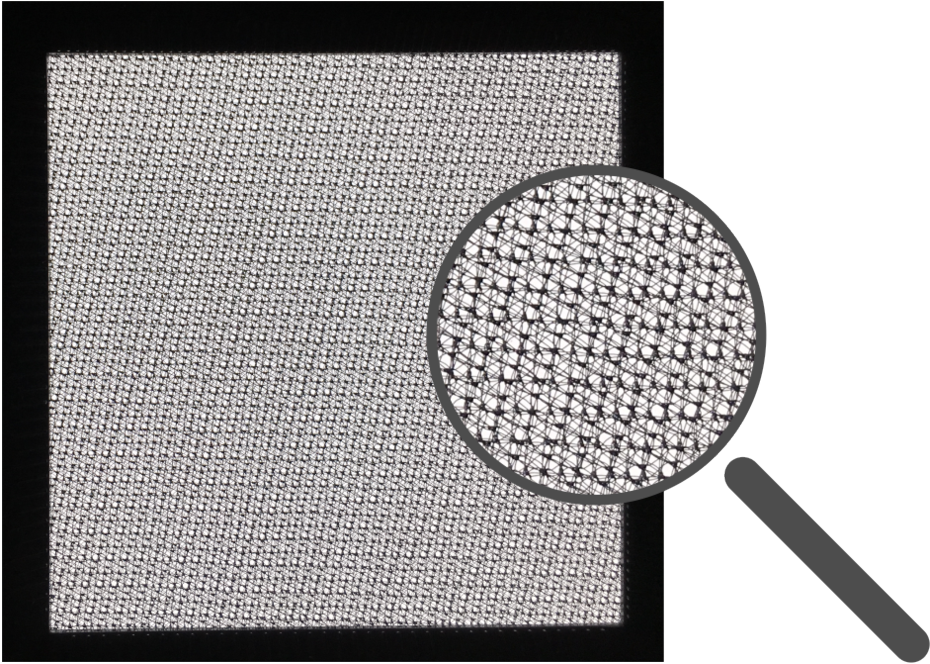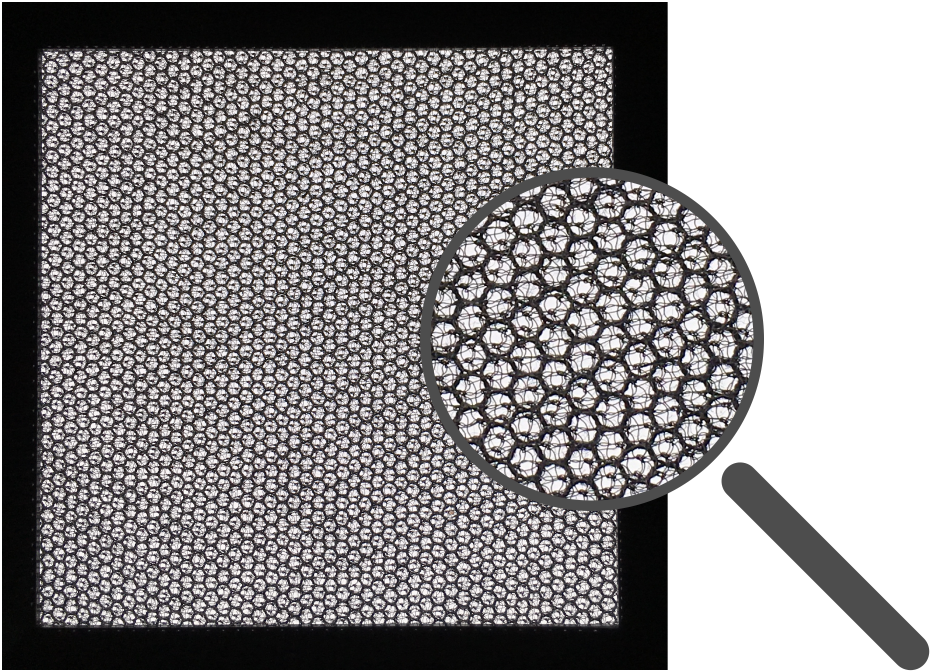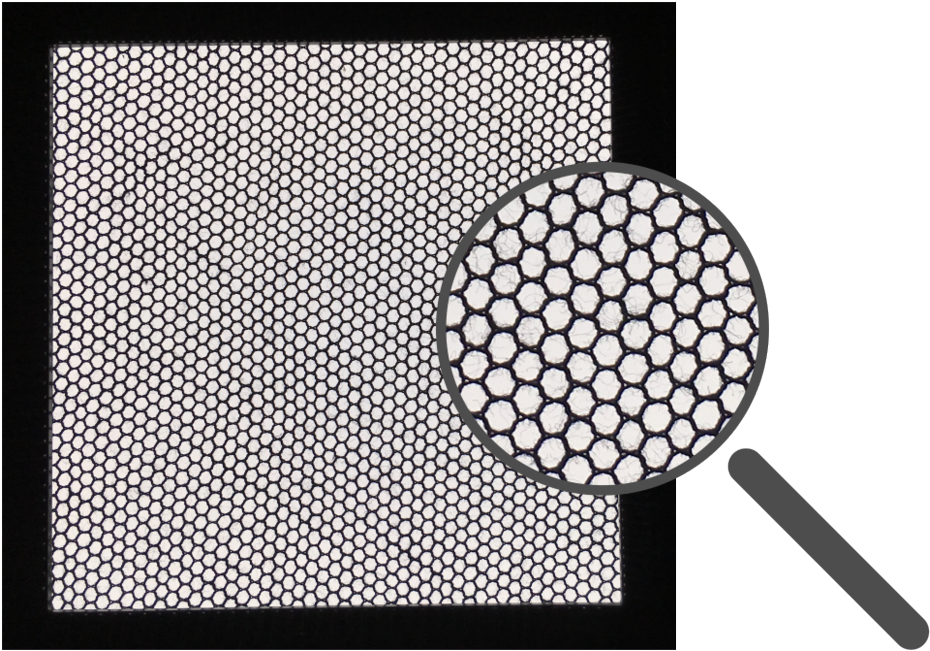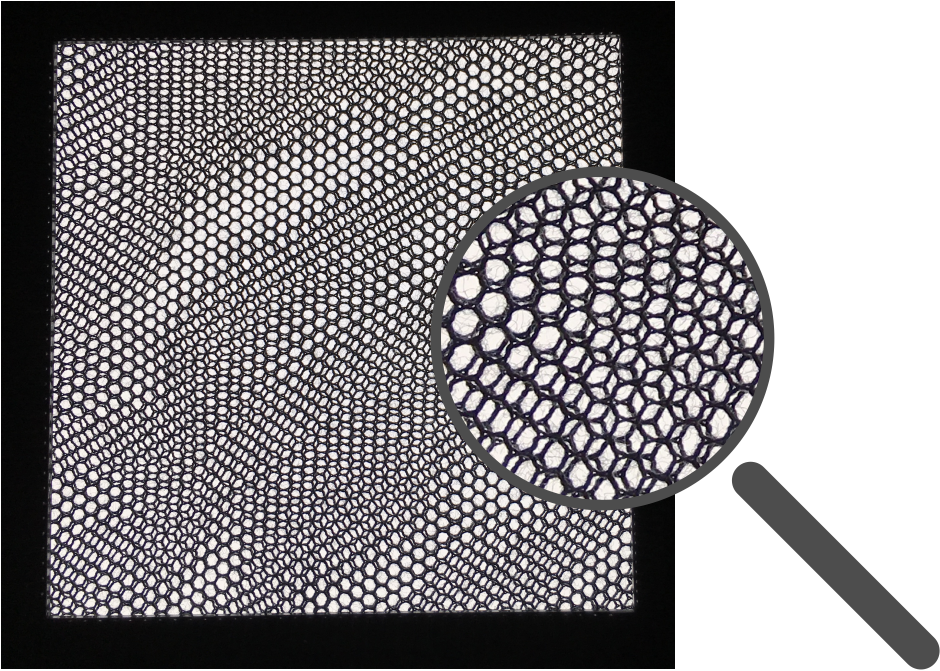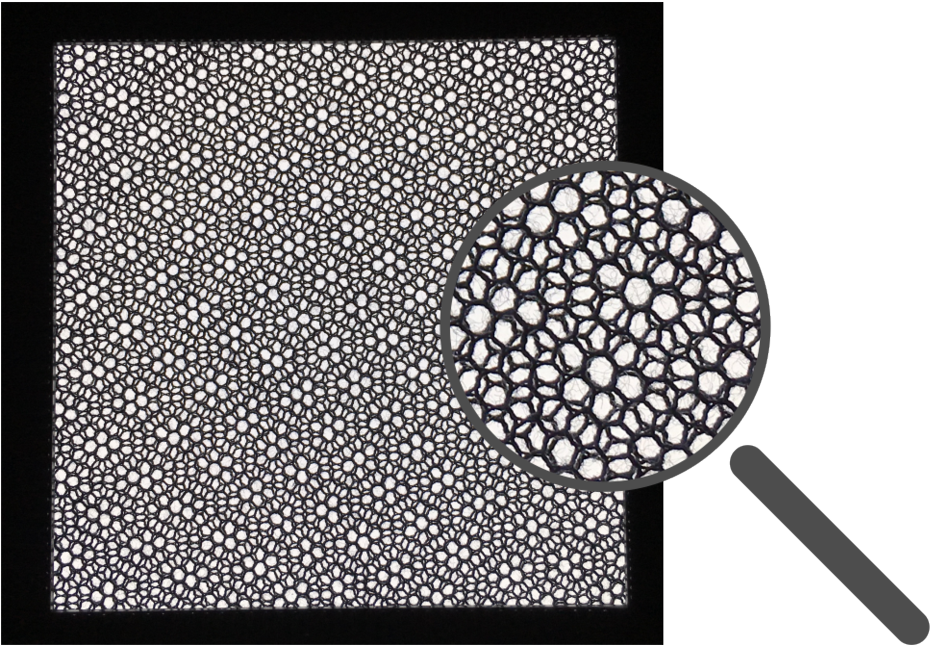The Moiré Effect in Photography and Videography
Common Flaws Explained With Digital ImagingMoiré is one of the most common flaws in videography and photography. Wavy lines appear in the image. Moiré is caused e.g. by the interaction of regular patterns or structures in the subject with other regular structures of the camera sensors.
The camera sensors (CCD chips) are designed such that the light- and color-sensitive pixels are arranged in a regular pattern above and below one another. Most sensors have square pixels, but there are also other pixel shapes, such as hexagons, triangles or rhombuses.
If the subject then has a regular structure, e.g. a brick wall, wire mesh or woven clothing, moiré can occur, appearing as wavy lines and color changes. The effect is most pronounced when the overlapping patterns, i.e.,. honeycomb, are very similar or even identical.
But moiré can also arise outside of a camera when net-like fabrics such as fine grids or fly screens are placed one over the other. Overlapping the different patterns creates new patterns that were not previously contained in the net structure.
These fine nets are used in film and photo studios as well as in theaters, e.g. to reduce contrast and/or create depth or other visual effects in illumination. Two or three layers of netting can also be used to achieve the desired effects, e.g. to dim the background. The moiré effects described above can occur in precisely these situations.
Cotton tulle, a knit fabric with exact, uniform, honeycomb, hexagonal mesh grids, is often used in videography and photography (Figure 2).
Moiré is easier to prevent when a material is chosen were the horizontal and vertical structures are very different.
There is no better fabric for this purpose that the exclusive NoMoiré by SUNBOUNCE (Figure 1). The material is made up of lots of tiny loops forming a horizontal structure; but there are no loops in the vertical structures. There is no recurring pattern that could cause moiré in conjunction with structures that we know of.
The following illustrations show that the cotton tulle (Figure 2) has significantly fewer and larger stitches that the SUNBOUNCE NoMoiré (Figure 1). The cotton knit has 22 stitches and the NoMoiré 47 stitches along the same length.
Click Images to Enlarge
Effects of the NoMoiré
Figure 3 NoMoiré Single, without moiré
Magnification clearly reveals the structure of the NoMoiré.
Figure 4 NoMoiré, rotated 90° Without moiré
If two layers of this structure are placed one over the other and displaced at a 90° degree angle, moiré cannot occur.
Figure 5 No Moiré plus cotton knit without moiré
Even when used with your hexagonal knit Single-Scrims, NoMoiré does not cause disruptive moiré
Effects of the Bobinette
Figure 6 Hexagonal cotton knit SINGLE Without Moiré
Figure 6 shows a single layer of the material, which does not create moiré.
Figure 7 Hexagonal cotton knit DOUBLE Creates Moiré
In figure 7, two layers of the material, with the pattern aligned, are placed one over the other; the moiré effect is clearly visible.
Figure 8 Hexagonal cotton knit DOUBLE Rotated 15°, without moiré
In Figure 8, there are also two layers of the material placed one over the other, but the top layer is rotated precisely 15-degrees in relation to the bottom layer. This does not create a new pattern, but moiré is prevented.
This makes sense economically, because there is no waste due to angular or diagonal cuttings, and two singles can be used separately or combined to form a double.
Less waste accounts for the significant difference in price between the hexagonal cotton knits and the NoMoiré.
Other features of the unique and exclusive Sunbounce material:
- Much finer thread makes the NoMoiré virtually invisible, and in the areas out of focus, it is not even noticed. The NoMoiré is ideal for dimming large background surfaces. This also applies to the use of two layers of NoMoiré.
- There are no recurring patterns in the NoMoiré that could cause moiré in conjunction with structures that we know of.
- Because the NoMoiré is made of a synthetic material, it does not rot (like cotton does) when the fabric is put away temporarily before it is dry.
- Hard to believe but true: The NoMoiré weighs only about 20 g/ m².
- The NoMoiré is elastic and yields to touch or wind, which prevents many types of damage.

